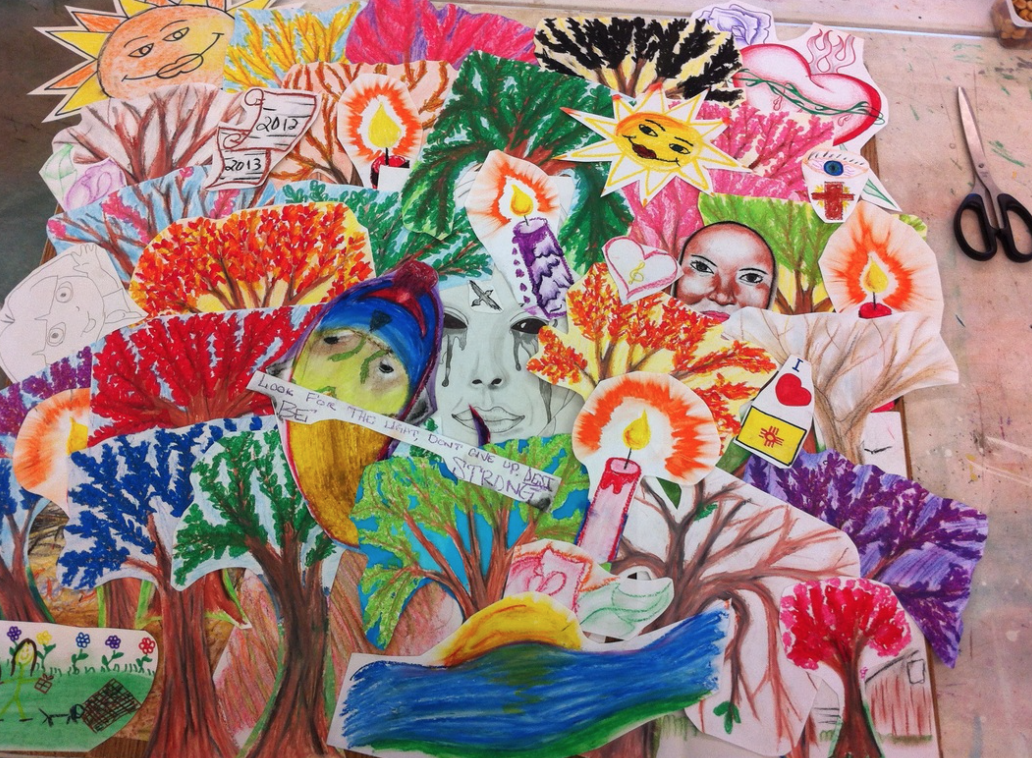Contributed by Stephany Garcia (Teacher Candidate)
The Ontario Art Therapy Association is a non-profit organization that consists of members who promote, maintain, and develop the profession of Art Therapy in all of Ontario. Their mission is to serve members and communities by creating standards of Art Therapy education, professional skills and ethical practices.
Through this organization’s services teachers, school, and parents have the ability to find an art therapist in their area, and learn about the workshops and classes each member gives. There is also the option of becoming an art therapist, in which members receive information on theory, techniques, sources for materials, professional development, as well as the opportunity to network with other Art Therapists and allied professionals.
OATA describes art therapy as a health service profession that takes into consideration thoughts, feelings, behaviours and spirituality within the process. It explores art and other creative outlets in support of a person, child, or student’s goals. The main focus, as the name would suggest, is to support the idea that the process of making art is fundamentally therapeutic.
Introducing art therapy to children and students in schools has many potential benefits, such as: encouraging creative thinking and risk-taking in a safe environment, offers opportunities to achieve better self-awareness, relief from stress or anxiety, provide an accessible modality for persons with certain learning disorders or other traumatic experiences. Overall, it promotes a positive mental health experience in which children can increase their self-esteem, self respect, and helps build social skills when working or sharing with other students.
The Comprehensive School Health cohort believes that health promotion is based on three pillars: a balance of physical, social and emotional/ mental health. Having an art therapist, such as the one’s recommended by OATA can benefit schools because it provides the opportunity for educators to receive workshops in which they can learn how to incorporate these approaches into their Arts curriculum, and the Health and Physical Education curriculum. There would also be the option of having an art therapist work with classrooms and lead age-appropriate workshops/ classes, or even provide ideas of how to create a club within the school that could be available to students who might be interested in this artistic outlet.
CSH recognizes the importance of positive relationships/ attitudes and healthy active living while promoting autonomy through increased self-esteem, confidence and resilience. Art Therapy focuses mainly on social and emotional/ mental health, but also supports integrative learning for students. It is an open, friendly environment that builds social skills, can help change behavior, increases coping skills and develops strategies for problem solving.
As a teacher candidate in the Comprehensive School Health cohort, I find this organization as a tool for all educators; to provide a safe outlet in which self-regulation, feelings, creativity, strengths and skills can be built on. It is an outlet that fosters on the idea of focusing and concentrating on a single activity, while shutting out intrusive thoughts, and in a sense can be a form of meditation. Most importantly, it does not rely on language or verbal skills, so it can help children who might be less capable and less comfortable expressing themselves through words. By include a wide range of art materials and processes (such as working with clay, painting, making a mask, creating a visual journal, or assembling a collage), this could help students express themselves, their emotions and feelings through a creative manner.
For more information, please visit: http://www.oata.ca/arttherapy

